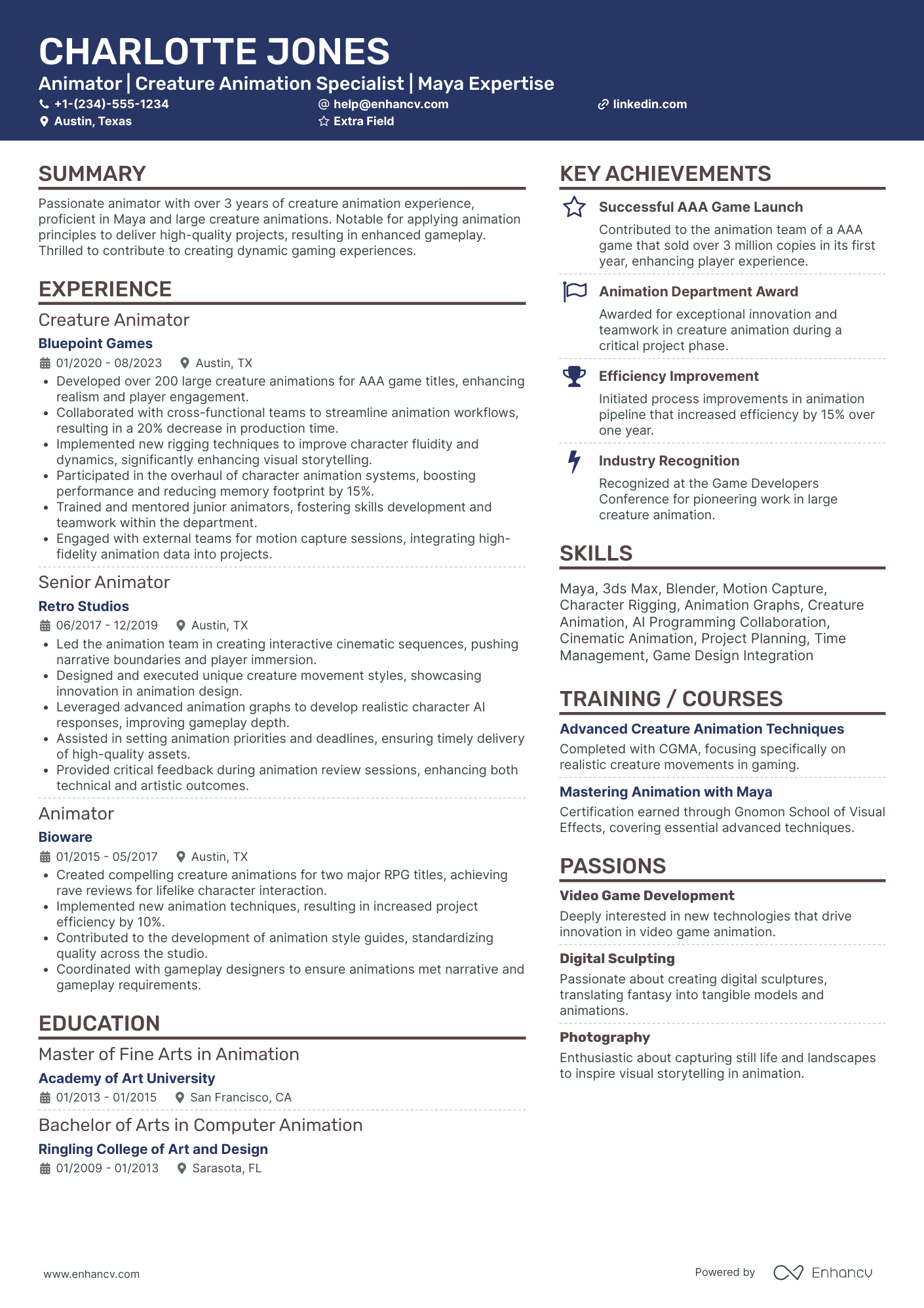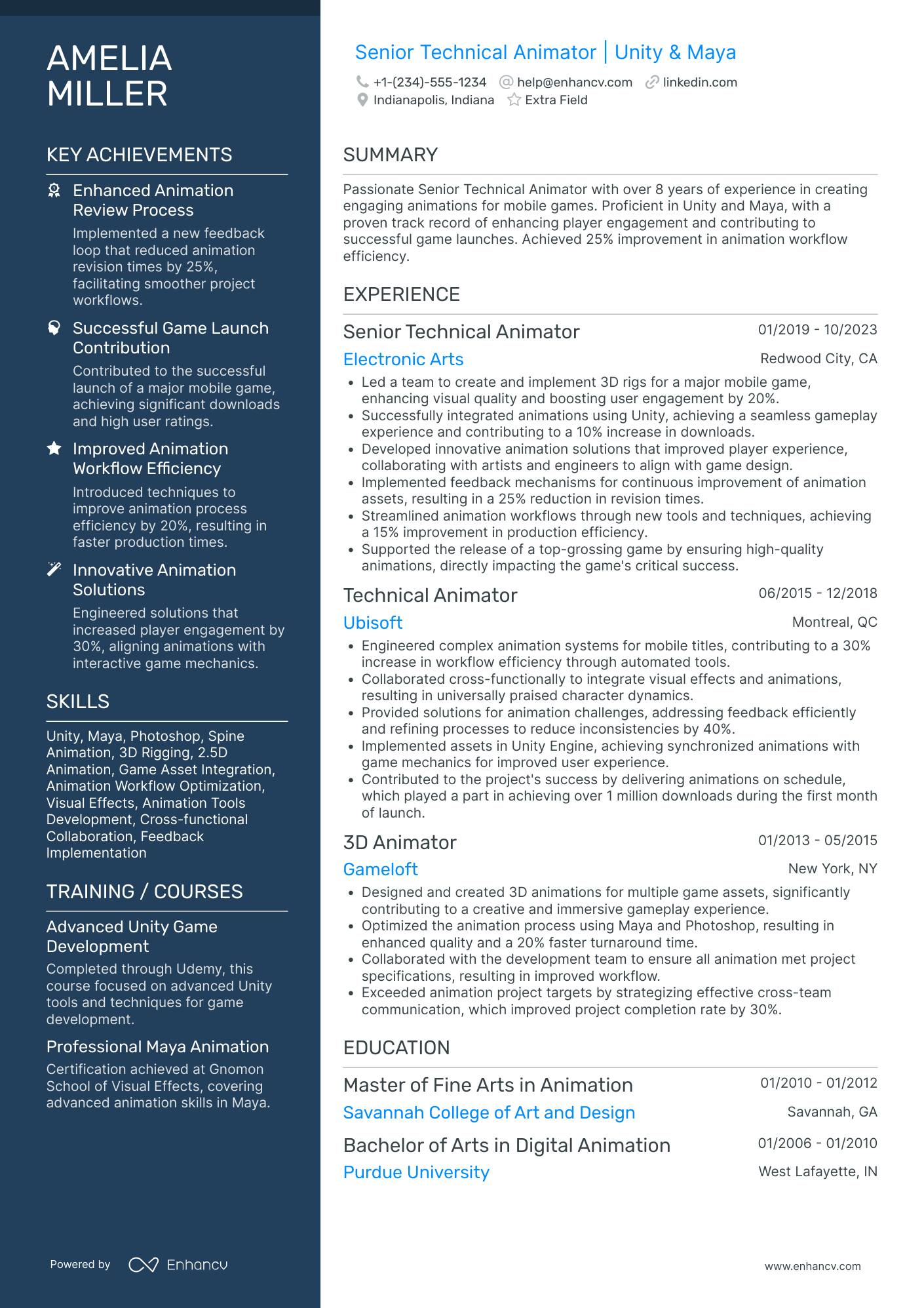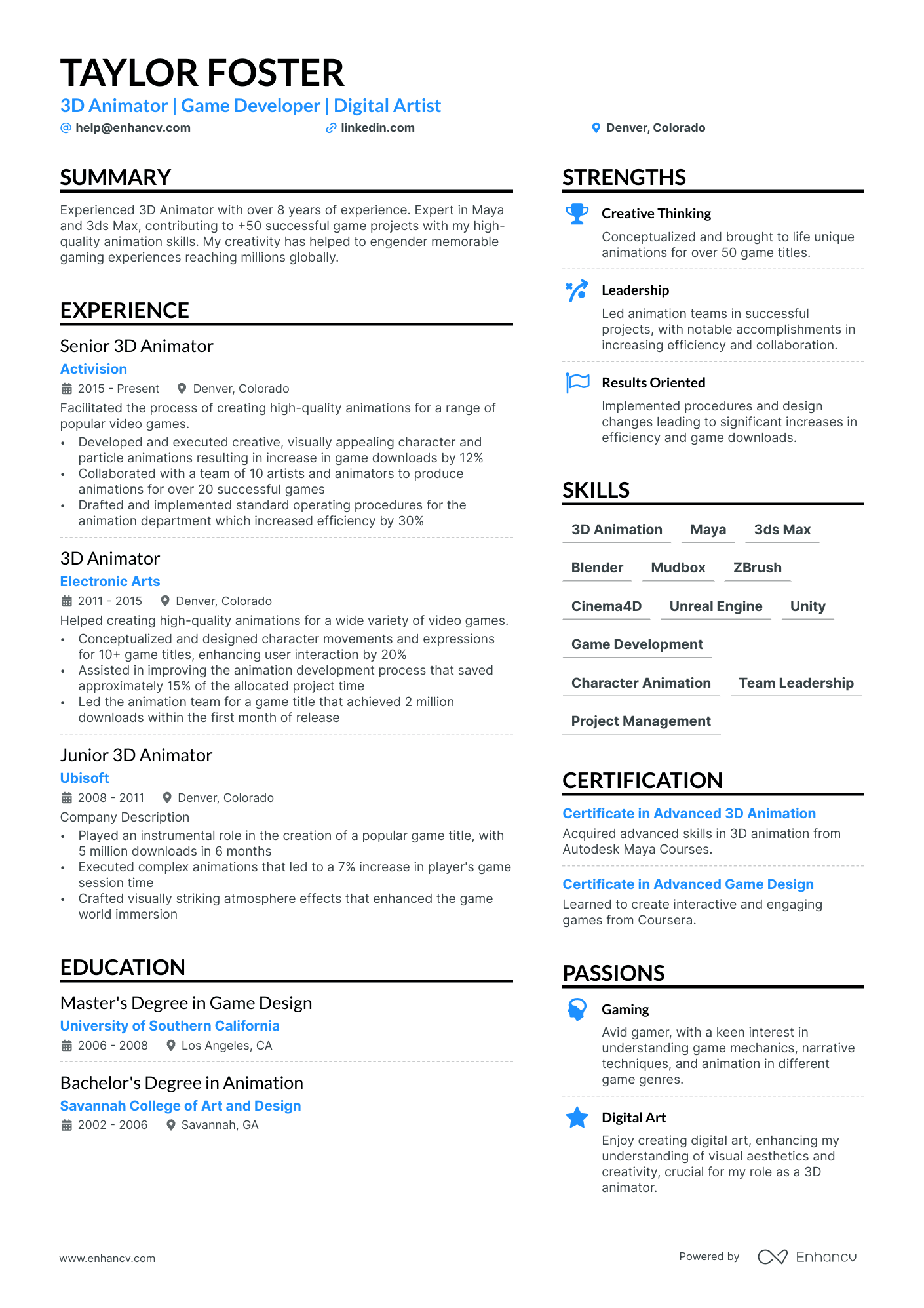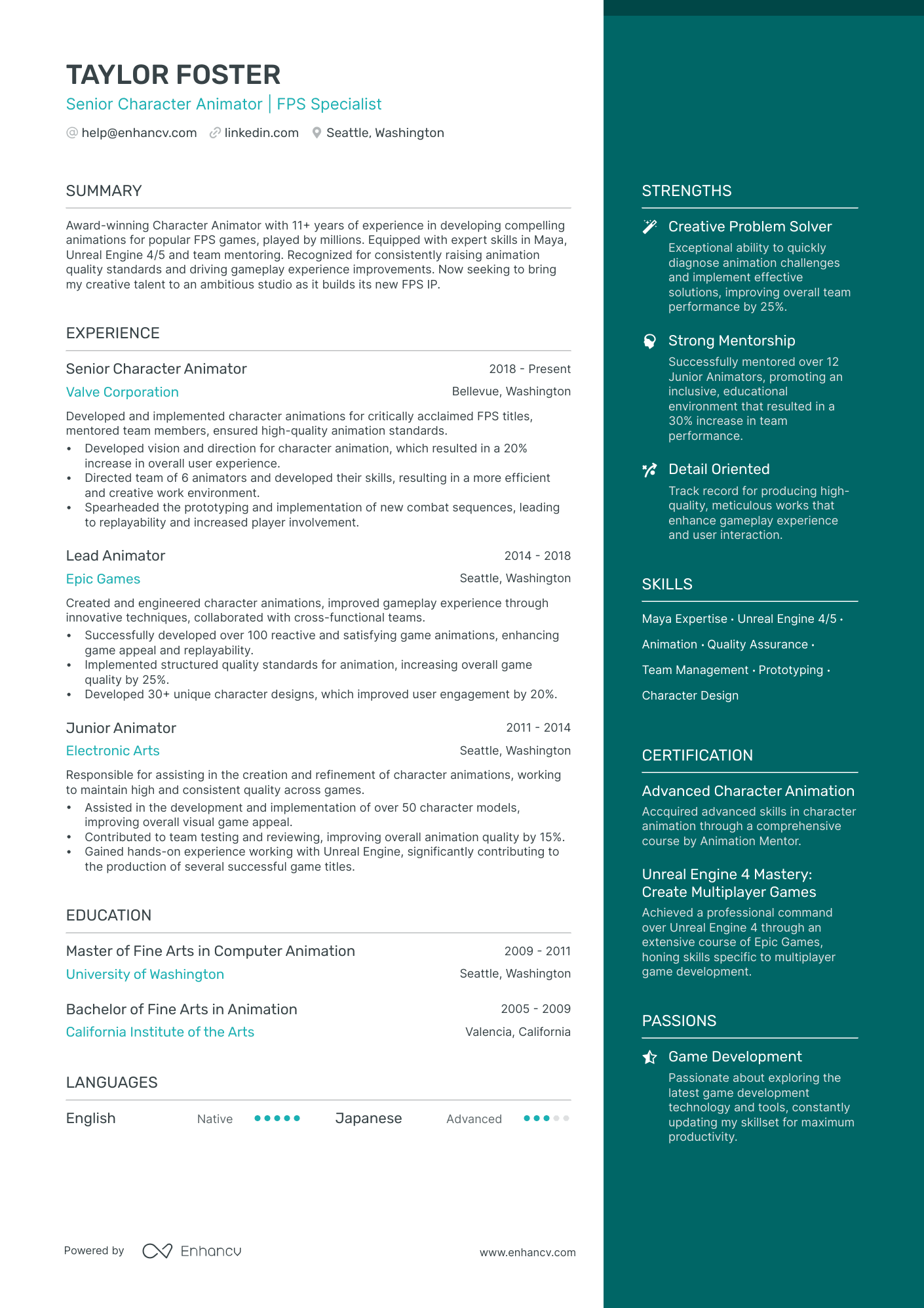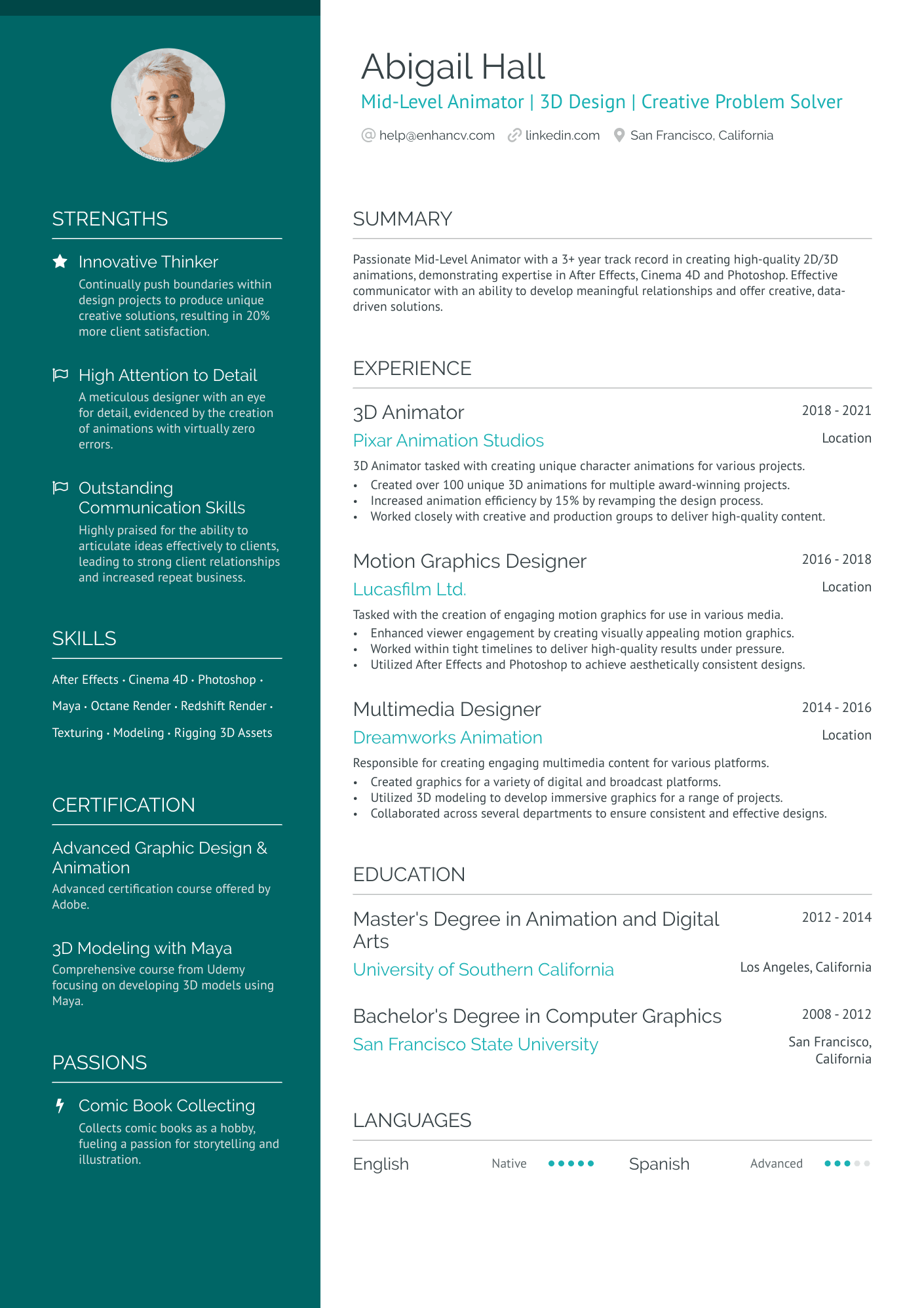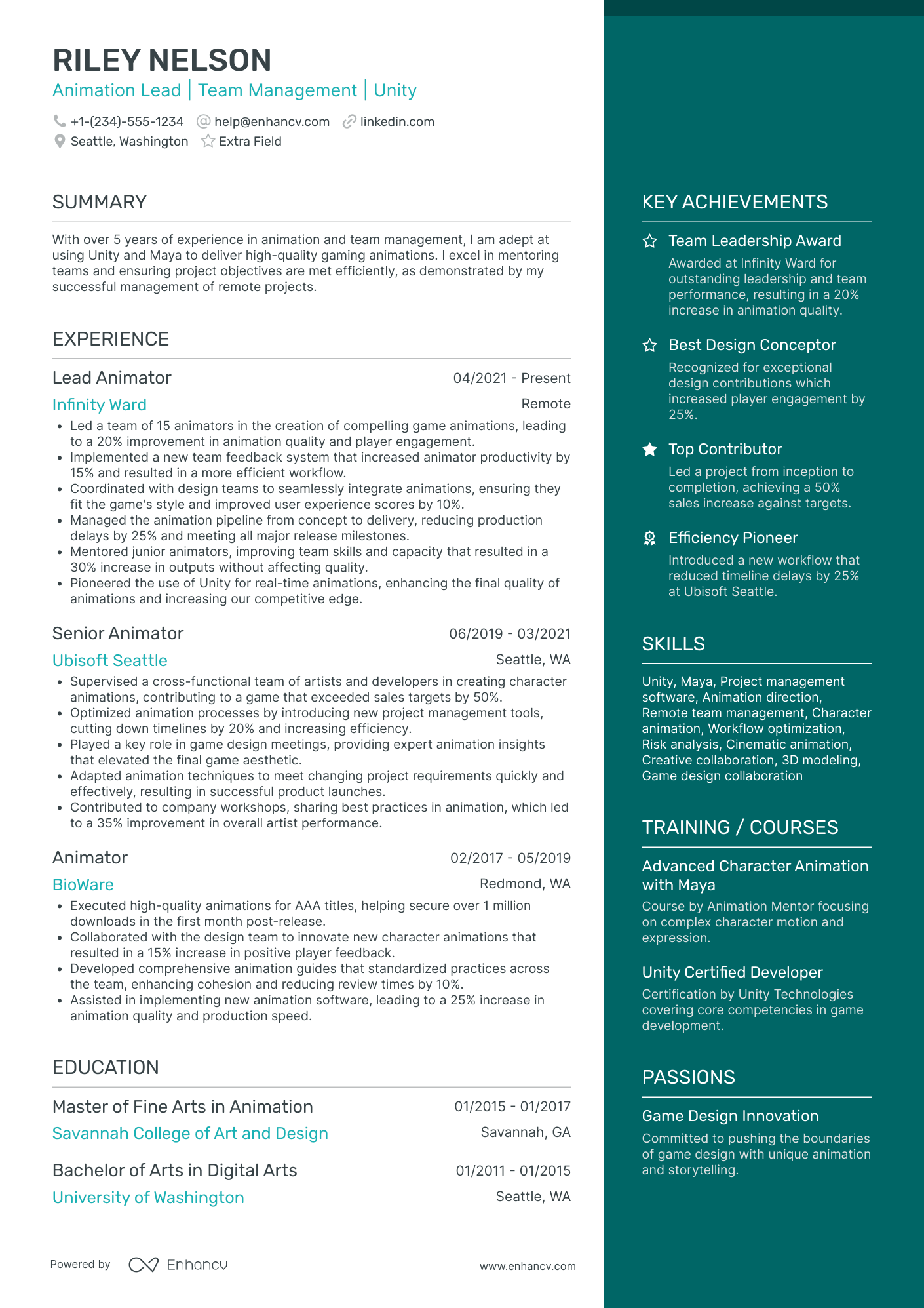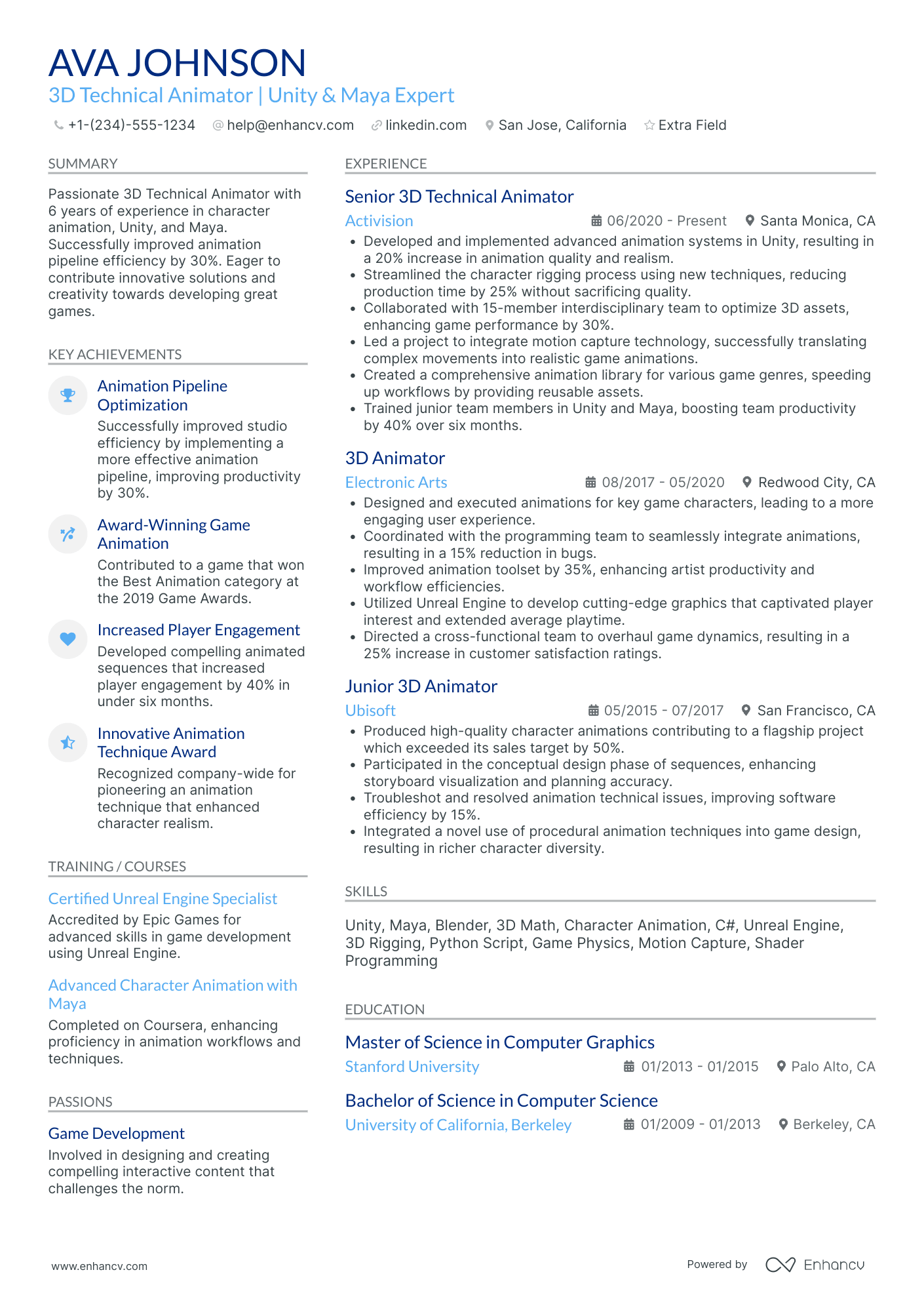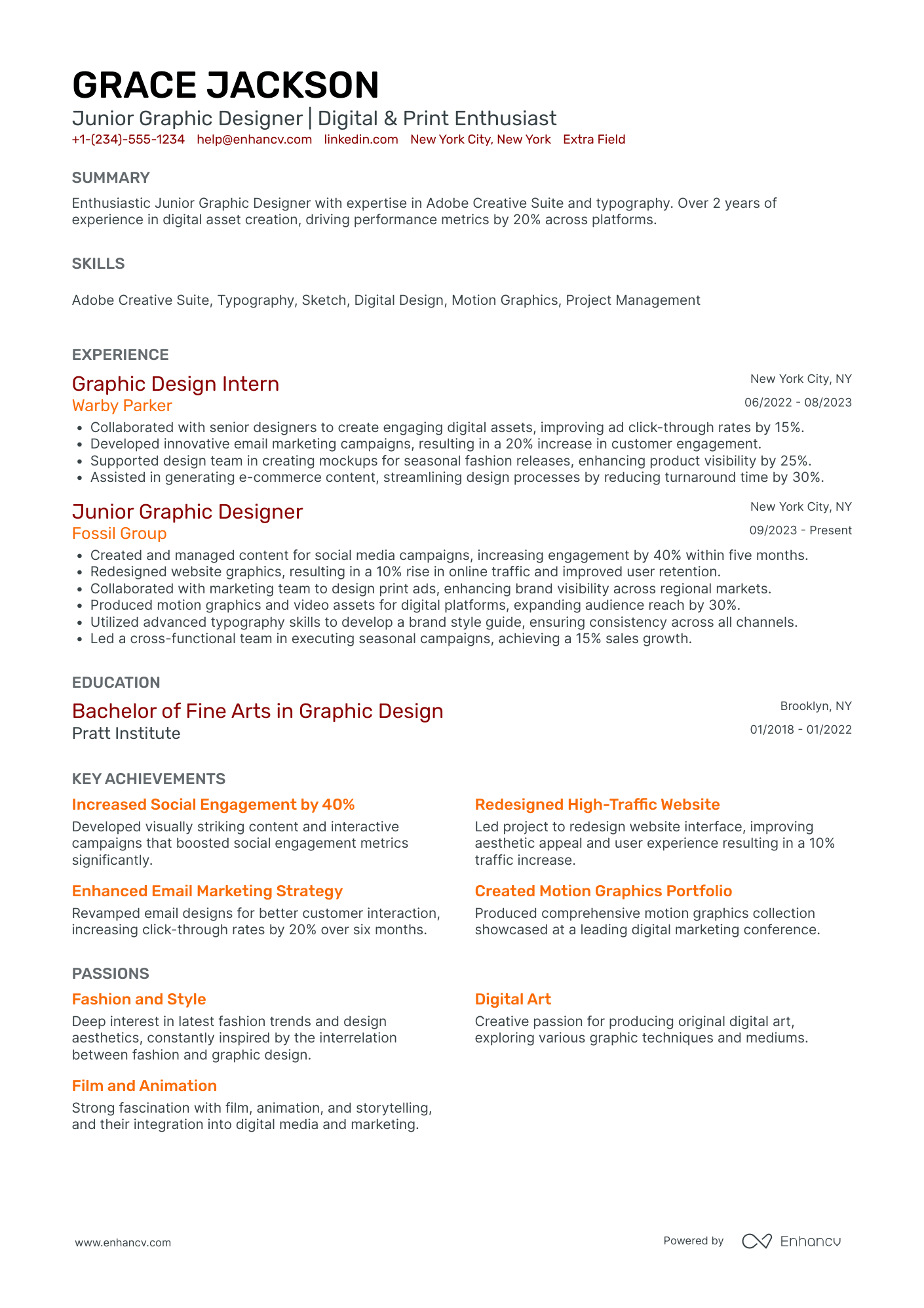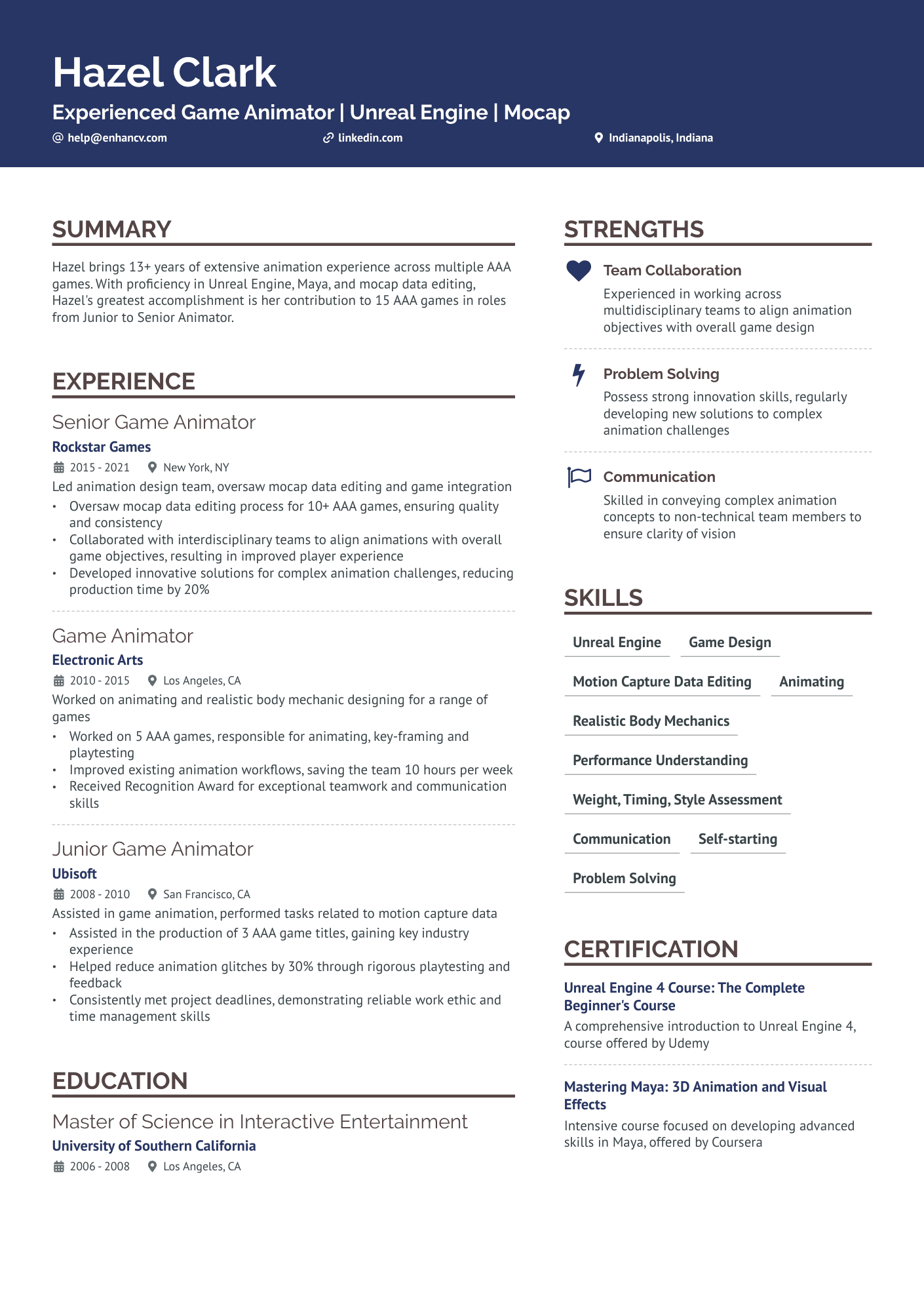Do animators even need a resume? Isn’t animation a tight industry where everyone knows each other and a small number of people get most of the work?
Nope.
You may be surprised, but the animation world is a wide global industry with tens of different niches and thousands of companies looking for their new favorite animator.
Just search “animator” on any headhunting website and you’ll get the idea.
Guess what all those recruiters are waiting for: an animator resume that will finally end their headhunting quest. Your resume.
And we can help you write it.
What you’ll learn today
- How to choose a resume template that best captures your skills and qualifications
- How to make sure your resume is relevant to the position recruiters are looking to fill
- What you should write in your experience section and your summary section to make your resume more attractive to recruiters
- How to properly indicate your experience with animation software and pipelines
- How to land an interview 9/10 times with your resume
How to write an animator resume
It’s difficult to say who exactly will be looking at your resume: a recruiter or your future colleagues.
If you’re applying for a small indie-game studio, chances are you will be hired directly by its founders or your future creative lead.
If this is a big company, then your resume should initially pass through the wall of their HR department. And probably an ATS. Good thing we got you covered and explain how to write a resume that passes ats.
In any case, whoever looks at your resume, they ask themselves a simple question: “are you the right animator for their environment?”
Have you ever worked in a big team of creatives? Do you know the tools the company is using in its animation process?
The competition in the creative industry is fierce, so you have to make sure every section of your animator resume stands the test.
What layout is best for an animator resume
The best layout for animator resume is:
- Header section with portfolio link
- Summary section with strong points of relevance to the position
- Experience section that demonstrates both creative and organizational abilities
- Skills section that lists all industry-standard tools you’re capable of using
- Education
- Industry Certificates (optional)
How should i structure my animator resume header?
Ultimately, you will be judged by your skills. Your best shot at getting the job is to direct the attention of the person who is hiring you to your creative portfolio.
That is why placing a portfolio link in your resume header section is far too important to be neglected.
Or at least link to your LinkedIn account, so the recruiters can have another way of contact, and save you for future opportunities if this one passes.
2 animator resume header examples
There are many industry examples of animators being hired after showcasing just one good video. Make sure to structure your portfolio so that your strongest work is featured first. Usually, that is your last work, so if you are an experienced animator you might concider the reverse-chronological resume type.
Recently, demo reels have become more and more demanded for jobs, so make sure to include a link to one in your portfolio or header directly.
After directing attention to your portfolio, the second most important thing is to write a relevant Summary section.
What should i write in my animator resume summary
Your resume summary will depend largely on the position you’re applying for. Don’t make the mistake of writing a generic description of your past experience that will fit all your applications.
There are several industries where animators are most demanded:
- TV / Cinema
- Game development
- Marketing
- Mobile development
Applying for each one of those has its nuances.
For example, when you apply for an animator position in the marketing industry, you will mostly be dealing with explainer videos, motion graphics, and interactive interfaces.
In this case, if you put your Game Development experience or Character Animation experience in the summary section, you may send the wrong signal that you’re not the right fit for the job.
In this case, focus on your ability to create highly engaging explainer videos and animations, if that is what is mentioned in the job description:
If you’re applying for an animator position in game development, focus on your finished projects and the ability to work with a team of developers.
If you have experience working for popular brands, mention that too. It’s especially valuable in the TV & movie industries, where connection to the industry means the most.
If you’re applying for specific TV projects, domain experience would be a great bonus.
For example, you have better chances of getting the position if you’ve already worked for news or sports.
Optimize your resume summary and objective for ATS
Drop your resume here or choose a file.
PDF & DOCX only. Max 2MB file size.
3D animator resume summary samples
Even though 3D animators and 2D animators share the same fundamental animation skills, their working environments are very different and resume for animation should reflect that.
3D production is always a complex and expensive pipeline. 3D animators work closely with departments of modelers, riggers and actors in order to deliver exceptional results.
Your summary should reflect both collaboration experience and proficiency with industry-standard 3D animation tools.
This is a summary for 2D animator, which would be instantly disregarded as a candidate for 3D animation work.
This is a 3D animator resume sample summary:
Now that you’ve established yourself as a fit candidate with your summary, it’s time to expand the positive impression while properly framing your experience section.
What do employers seek in animator resume experience section?
Again, what recruiters want to see in your animator resume experience section will largely depend on the industry you’re applying for.
This is what is important to emphasize in your experience section for game development industry:
- Proficiency with game engines (UE, unity, mobile)
- Solid knowledge of game development pipelines
- Collaboration with modelers, riggers, texturers, concept artists, and other team members
- Experience with characters
TV/ Movies:
- Collaboration with storyboard artists, actors, voice actors, other animators, modelers
- Domain experience with relevant TV projects (news, cartoons, sports)
Marketing / business:
- Working with clients
- Explainer videos / motion graphics
- Typography (kinetic typography is used a lot in modern marketing)
With any industry:
- Proficiency with 2D or 3D animation software (Maya, Blender, 3DMax, After Effects)
- Strong animation basics (timing, spacing, composition, physics)
Below is an animation resume sample that demonstrates how you should not frame you experience:
- •Concepted, created, composed, and animated everything from start to finish under tight deadlines
- •Produced various animation assets and 3D animations
- •I worked to develop algorithms for company systems.
- •Solved various creative problems
This is an animation description that is too generic-it mentions no tools, no specific pipeline, no collaboration with other departments.
Here’s the proper animator resume sample:
- •Collaboratedand worked closely with riggers, modelers, texturers, creative leads and Animators to design and develop animations for various digital projects.
- •Developed and designed movement animations, characters animations, facial animations, environments, special effects, and performed other story/animation tasks as requested.
- •Using Maya, 3DMax, Nuke and Zbrushdeveloped captivating 3D animated designs, characters, and time-based visuals that complied with the storyboard or visual strategy created by the agency.
Finally, after you’ve properly described your animator working experience, it’s time to list all the various skills that will help you land the job.
What special skills are needed for an animator resume
The most important resume tip we can give you when it comes to your animator resume skills section. Pay attention to whether the job requires 3D or 2D animation skills. Even though fundamentals are the same, the tools and the pipeline are completely different. Here are the most important hard skills to include in your resume.
Top hard skills in the animation industry
- Strong understanding of animation principles
- Drawing / sketching / storyboards
- Animation software 3D (Maya, 3dMax, Blender)
- Animation software 2D (After Effects, ToonBoom, etc.)
- Rigging (strong understanding is usually highly valuable in character animation)
- Scripting in Python / MEL
- Game engines working knowledge
- Motion graphics
- FX (particle effects animation)
Soft skills are no less important for successful animator than technical ones.
The most demanded in the industry are the ability to work well with others and stay creative while following strict deadlines.
Put these soft skills in your skill section.
Nine soft skills that stand out on animation resumes
- Problem solving
- Communication
- Attention to details
- Time-management (meet deadlines)
- Patience
- Presentation skills
- Teamwork
- Analytical skills
- Ability to work under pressure
How to include your education in an animation resume
Even though education is not the priority and you most often will be judged based on your finished projects and industry experience, an education section can be useful.
It’s a great opportunity to emphasize that you spent a lot of time learning and practicing animation fundamentals.
If you took facultatives or finished some student projects that might be relevant to the job you’re applying for, emphasize those.
For example, if the job requires rigging experience or strong facial expressions animation skills, and you happened to work on those as a student, write about it in the education section.
How to add certificates to animator resume
Of course, no certificates will replace a well-put animation portfolio. Especially those that say “you’re a great animator” or something like that.
However, if you have certificates that demonstrate proficiency with complex industry tools, like 3D modelling packages (3DMax, Cinema 4D, Maya) or Special Effects (Nuke, Adobe), use it.
Here are some options:
- Certification in Autodesk 3ds
- Maya Certification
- After Effects Certification Training
In short, what makes a good animator resume?
Here are some hallmarks of great Animation resumes:
- Be relevant to the position you’re applying for, be it 2D animation, 3D animation or motion graphics
- Demonstrate both your proficiency with animation tools and the ability to effectively collaborate with others
- Have a link to your portfolio, ideally a demo reel with the most recent and complex animation projects you tackled
- Frame experience to the niche you’ll be working in, because a game development Animation resume and TV animator resume look completely different
- Demonstrate strong fundamental animation skills, from timing and spacing to character facial expressions and body gestures
Animator resume examples
By Experience
Junior Motion Graphics Animator
Entry-Level Animator
Senior Technical Animator
By Role
3D Animator
Character Animator
The Character Animator role emerged from the broader field of animation. Hence trends in animation impact this particular position greatly.
Below are some tips to boost your chances when applying for Character Animator positions:
- It's key to have experience in character rigging and skinning, as well as in animation software. Studios require these skills to create believable character motion and expressions.
- Make sure your resume emphasizes your character rigging and skinning experience, or you may overlook an essential part of the process.
- Highlight any related technical background, such as a degree in Animation or related field. Many excellent Character Animators have a strong foundation in the fundamentals of animation, so it's important to feature this on your resume.
- Don’t just list your skills – show how they contributed to the success of the project, e.g. “improved character expressiveness with…”, “enhanced scene dynamics by...”. Follow the “Skill-Action-Results” format.

